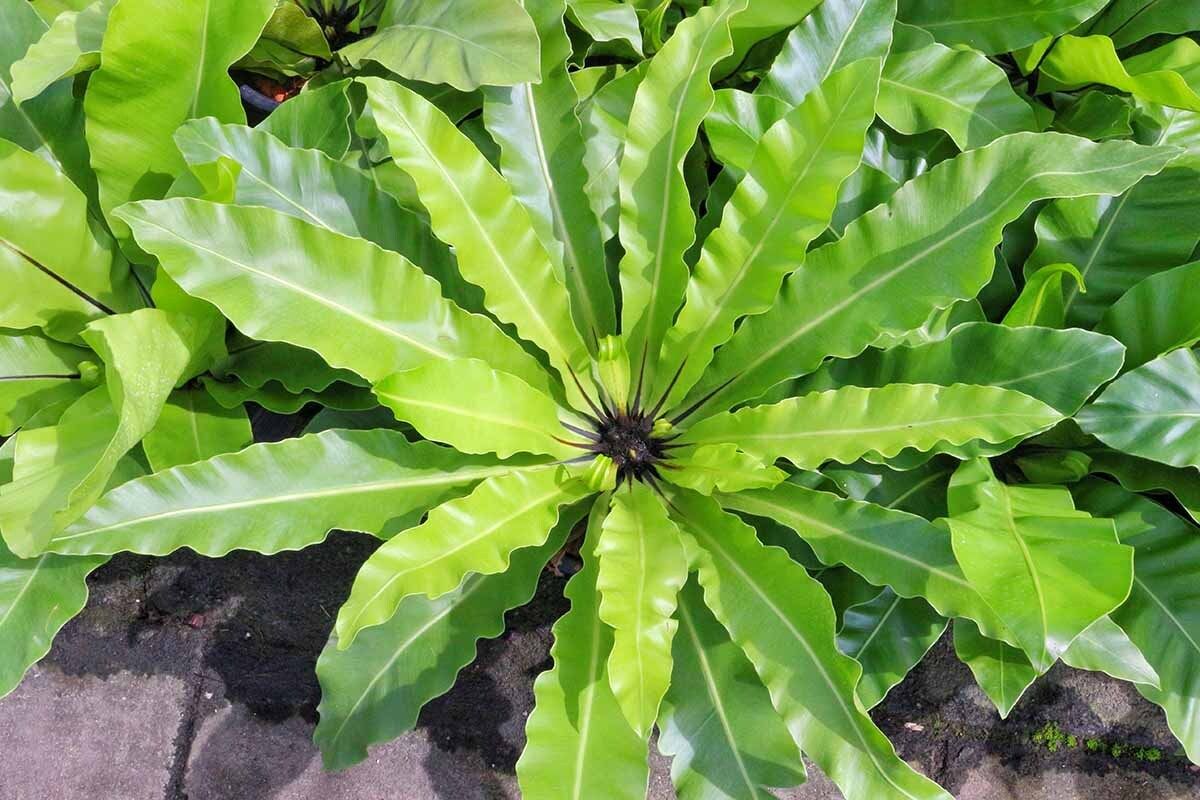
Bird's Nest Fern is a unique plant that stands out with its lush, green fronds and rosette shape. Ever wondered why it's called a "bird's nest"? The name comes from the way its leaves form a nest-like structure, making it a favorite among plant enthusiasts. This fern isn't just pretty; it's also easy to care for, making it perfect for both beginners and seasoned gardeners. Bird's Nest Fern thrives in low light and humid conditions, mimicking its natural habitat in tropical rainforests. Ready to learn more? Here are 32 fascinating facts about this incredible plant!
What is a Bird's Nest Fern?
Bird's Nest Fern, scientifically known as Asplenium nidus, is a popular houseplant with lush, green fronds that resemble a bird's nest. This tropical plant is native to Southeast Asia, Australia, and East Africa. Let's dive into some fascinating facts about this unique fern.
Unique Characteristics of Bird's Nest Fern
This fern stands out due to its distinctive features. Here are some intriguing aspects that make it special:
- Bird's Nest Ferns have fronds that grow in a rosette pattern, resembling a bird's nest.
- The fronds can grow up to 5 feet long in their natural habitat.
- Unlike many ferns, Bird's Nest Ferns have undivided fronds, giving them a smooth, leathery appearance.
- The plant's fronds are bright green with a prominent midrib.
- Bird's Nest Ferns are epiphytic, meaning they often grow on other plants or trees in the wild.
- They thrive in humid environments, making them perfect for bathrooms or kitchens.
Growing Conditions for Bird's Nest Fern
To keep your Bird's Nest Fern healthy, it's essential to provide the right growing conditions. Here are some key factors:
- Bird's Nest Ferns prefer indirect, filtered light. Direct sunlight can scorch their fronds.
- They thrive in temperatures between 60-80°F (15-27°C).
- High humidity is crucial for their growth. Aim for at least 50% humidity.
- Use a well-draining, peat-based potting mix to prevent root rot.
- Water the fern regularly, keeping the soil consistently moist but not waterlogged.
- Avoid watering the center of the rosette to prevent crown rot.
Benefits of Having a Bird's Nest Fern
Adding a Bird's Nest Fern to your home can offer several benefits. Here are some reasons to consider this plant:
- Bird's Nest Ferns are excellent air purifiers, removing toxins from the air.
- Their lush, green fronds add a touch of nature and tranquility to any space.
- They are relatively low-maintenance, making them ideal for busy individuals.
- Bird's Nest Ferns can help increase humidity levels in your home, which is beneficial for your skin and respiratory system.
- They are non-toxic to pets, making them a safe choice for households with animals.
- The plant's unique appearance can serve as a conversation starter and a focal point in your decor.
Common Issues and Solutions
Like any plant, Bird's Nest Ferns can face some challenges. Here are common problems and how to address them:
- Yellowing fronds can indicate overwatering or poor drainage. Ensure the soil is well-draining and adjust your watering schedule.
- Brown tips on fronds may be a sign of low humidity. Increase humidity by misting the plant or using a humidifier.
- Pests like scale insects and mealybugs can infest Bird's Nest Ferns. Treat infestations with insecticidal soap or neem oil.
- If the plant's growth is stunted, it may need more light. Move it to a brighter location with indirect sunlight.
- Fungal infections can occur if the plant is kept too wet. Ensure proper air circulation and avoid overwatering.
Interesting Facts About Bird's Nest Fern
Here are some fun and lesser-known facts about Bird's Nest Ferns:
- Bird's Nest Ferns have been used in traditional medicine for their supposed anti-inflammatory properties.
- In the wild, they can grow on rocks and cliffs, not just trees.
- The plant's spores are produced on the underside of the fronds and can be used to propagate new ferns.
- Bird's Nest Ferns are part of the Aspleniaceae family, which includes over 700 species of ferns.
- They are often found in rainforests, where they play a role in the ecosystem by providing habitat for small animals and insects.
- Bird's Nest Ferns can live for many years with proper care, making them a long-term addition to your plant collection.
- In some cultures, Bird's Nest Ferns are considered symbols of good luck and prosperity.
- The plant's scientific name, Asplenium nidus, comes from the Latin words for "spleen" and "nest," referring to its supposed medicinal properties and nest-like appearance.
- Bird's Nest Ferns are popular in terrariums and vivariums due to their humidity-loving nature and attractive foliage.
The Final Feather
Bird's Nest Ferns are more than just pretty plants. They play a key role in their ecosystems, providing shelter and nutrients. These ferns thrive in low light, making them perfect for indoor spaces. Their unique fronds, resembling bird nests, add a touch of nature to any room.
Caring for them is simple. Just keep the soil moist and avoid direct sunlight. They’re also great air purifiers, improving indoor air quality. With their rich history and ecological importance, Bird's Nest Ferns are fascinating plants worth having around.
Whether you're a plant enthusiast or just looking to add some greenery to your home, these ferns are a fantastic choice. They’re not just beautiful; they’re beneficial too. So next time you see one, remember all the amazing facts you’ve learned. Happy planting!
Was this page helpful?
Our commitment to delivering trustworthy and engaging content is at the heart of what we do. Each fact on our site is contributed by real users like you, bringing a wealth of diverse insights and information. To ensure the highest standards of accuracy and reliability, our dedicated editors meticulously review each submission. This process guarantees that the facts we share are not only fascinating but also credible. Trust in our commitment to quality and authenticity as you explore and learn with us.


